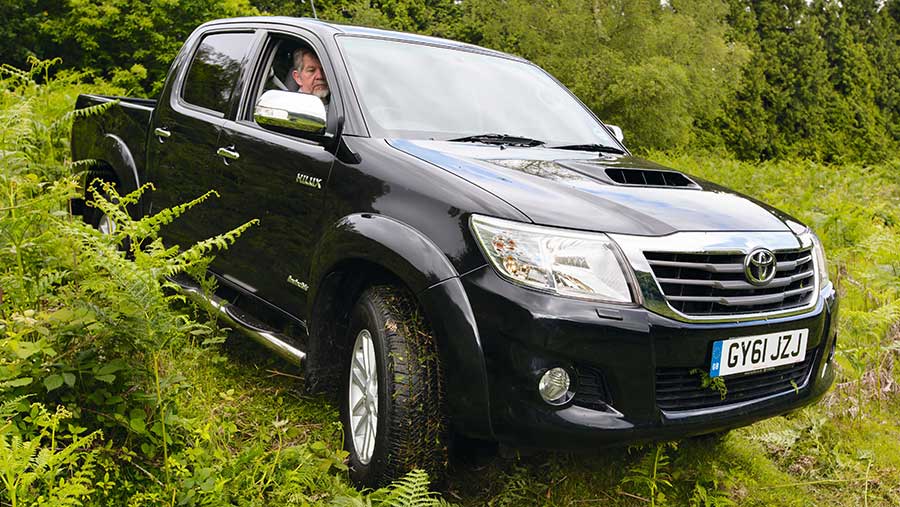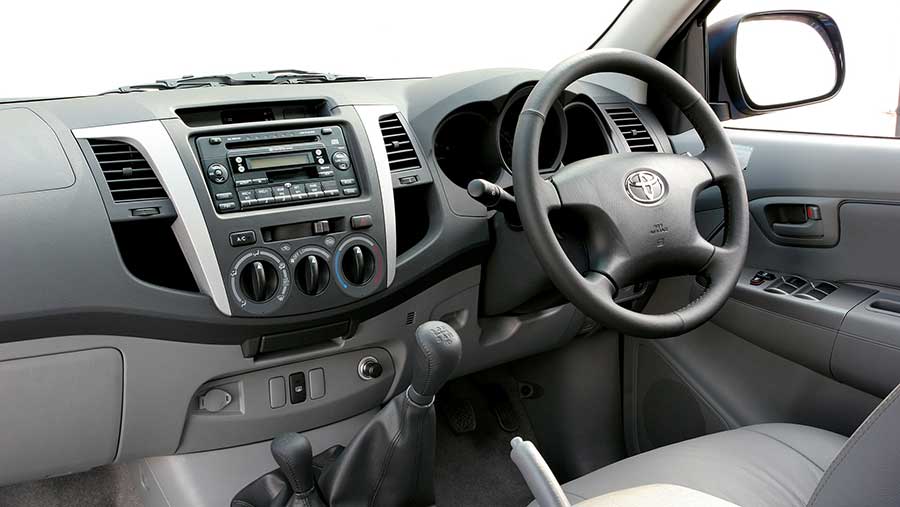Tips for buying a second-hand pickup: Toyota Hilux
 © George Barrow
© George Barrow Toyota’s Hilux is one of the most desirable second-hand pickups around, and as a result values hold firm, even for early examples.
For less than £15,000, buyers will be looking at the seventh generation, which had an 11-year build run from 2004 to 2015. The first of these trucks was introduced with a decidedly flat 2.5-litre, four-cylinder diesel, but this was followed closely by a considerably gutsier 3-litre four-cylinder.
There were a number of engine tweaks over the years, plus a couple of facelifts to freshen up the look. However, the basic mechanicals remained the same.
See also: Pickup test: Toyota Hilux Active
Build quality was high on this generation and it’s rare for them to suffer from corrosion, unless they’ve had a hard life. Reliability is also pretty good, particularly on pre-2012 models that weren’t fitted with a diesel particulate filter.
From a driver’s point of view, these trucks are fairly wooden to drive and the engines can be sluggish on the road, particularly the 2.5-litre. However, the smaller block tends to be the more reliable of the two as it’s put under less strain.

© Toyota
One of the downsides is that the braked towing capacity of 2.25t to 2.8t (depending on the model) is lower than many of its peers, but the payload on all double-cab models is comfortably over 1t.
Entry-level HL2 models came with the 2.5-litre engine, mid-range HL3s could be had with both, and the top-spec Invincible was 3-litre only.
High-mileage and rough early examples can be picked up for as little as £5,000, but some of the most recent models command prices as high as £24,000. For £10,000, buyers should be able to find a tidy 2008 to 2010 model with a 3-litre engine. Going up to £15,000 puts 2013 to 2015 trucks within reach.
What to look out for
Injectors
Both the 2.5-litre and 3-litre engines can have trouble with injectors, but the problem is more common on the larger block as it’s dealing with more fuel.
Damage tends to be caused by dirty diesel, but they will also wear naturally over time. If the engine is smoky on start-up, there’s a noticeable drop in performance, or there’s a tapping noise coming from the engine bay, the injectors could be on the way out.
They should be replaced or reconditioned promptly, as it can lead to piston damage and engine failure.
Injectors can be picked up second-hand for about £150, but they need to be coded to the vehicle. It’s possible to get reconditioned versions for a similar price and new ones are about £250.
Turbo actuators
Turbo actuators are fragile on the 3-litre, and they are prone to failure. The good news is that they can be picked up separately to the turbo and cost £150 to £200.
Diesel particulate filters
Later models suffer from the usual emissions-related problems such as EGRs and DPFs sooting up (DPFs were fitted from 2012).
As a result, these trucks need regular blasts to get the engine hot and burn off deposits – they don’t like pootling around at low revs all day. If efforts to shift deposits don’t work, professional cleaning is the answer, which can cost £300 or more.
For those that mainly do short journeys at low speeds, a pre-DPF model may be easier to live with.
Front differential
The weak spot in the Gen7’s driveline is the front differential, which is prone to failure.
Replacements are available from breakers, but the catch is that Toyota fitted these trucks with several different types over the years and it is pot luck whether they’ll have the correct one in stock. Buyers will need their vehicle’s identification number (VIN) and differential codes to work out which they need. Rebuild kits are also available from firms such as Milner Off Road, at a cost of about £300.
Specification
Engine: 2.5-litre, four cylinder
Power: 102hp to 144hp
Torque: 260Nm to 343Nm
Engine: 3-litre, four-cylinder
Power: 171hp to 197hp
Torque: 343Nm to 430Nm
Transmission options: Five-speed manual or four-speed auto (five-speed on later models)
Towing capacity: 2.25t to 2.8t
Payload: 1,040kg to 1,060kg
*Expect some variation in specification throughout the build run

